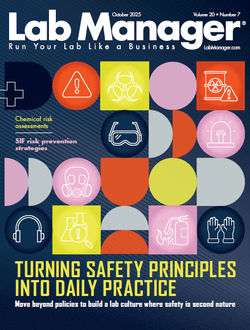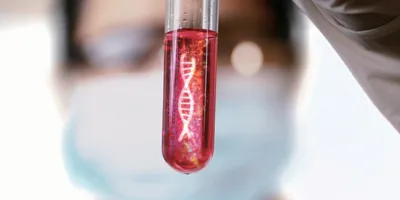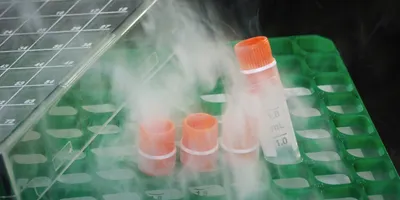CAMBRIDGE, Mass. – Whitehead Institute Founding Member Rudolf Jaenisch, who helped transform the study of genetics by creating the first transgenic mouse in 1974, is again revolutionizing how genetically altered animal models are created and perhaps even redefining what species may serve as models.
“This new method is a game changer,” says Jaenisch, who is also a professor of biology at MIT. “We can now make a mouse with five mutations in just three to four weeks, whereas the conventional way would take three to four years. And it’s rather straightforward, probably even easier than the conventional way.”
Scientists create models in mice by altering specific genes that have been associated with a given disease. The models allow for the study of the development and course of the disease and the effects of various interventions, including genetic and chemical. For the past 20 years, the creation of such models has remained relatively unchanged: scientists insert a piece of DNA into a mouse embryonic stem (ES) cell, inject the modified cell into a very early-stage embryo, called a blastocyst, then implant this developing ball of cells into a foster female mouse. The whole process can take years and tens of thousands of dollars to establish a mouse strain with, for example, a single copy of a gene “knocked out”. Such knockouts can only be created in very few species, including mice and rats, whose ES cells can be grown and modified reliably.
The new approach used by scientists in Jaenisch’s lab bypasses ES cells to quickly and efficiently produce mice with mutations in both copies of multiple genes. In next week’s issue of the journal Cell, Haoyi Wang, Hui Yang, and Chikdu Shivalila describe their technique, which is based on a system that certain bacteria use to fend off viral attacks.
 |
| Using the CRISPR/Cas technique, scientists in the lab of Whitehead Institute Founding Member Rudolf Jaenisch created mice with multiple, precise genetic mutations in a matter of weeks. The conventional method for creating such mice would take several years and thousands of dollars. As this cartoon of the new technique shows, the desired mutations, in this case oligos of Tet1 and Tet2, are microinjected into a very early mouse embryo (zygote), along with Cas9 mRNA and single-guide RNAs (sgRNAs) targeting Tet1 and Tet2. The blastocyst derived from the injected zygote is implanted into a foster mouse, where it grows into a mouse with both Tet1 and Tet2 genes altered. Image courtesy of the Whitehead Institute |
This is the first time that the system, known as CRISPR (for “clustered regularly interspaced short palindromic repeat”)/Cas (for “CRISPR-associated”), has been used to alter multiple genes in a single multicellular organism. Shivalila says the process is so accessible that he expects other labs to adopt it quickly.
“For any institution or university with a core facility, we think this will be the way they will start making mice carrying specific mutations because it’s a lot faster and so efficient,” says Shivalila, one of Jaenisch’s graduate students. “We were surprised that we could get two genes ‘knocked out’ at four loci very, very efficiently, about 80% efficiency. If we used TALENs, a more recent and complicated development in genetic engineering, we got 30% efficiency for just one gene.”
Because the CRISPR/Cas technique can generate mutant mice even without using ES cells, a limitation of the conventional method for making models, genetic research may no longer be confined to a limited list of model organisms—those for which ES cells exist.
“This breaks down the definition of model organism,” says Wang, a postdoctoral researcher in Jaenisch’s lab. “So now, even with limited resources, any animal with established embryo manipulation procedures could be the subject of genome engineering. With many of the animals’ genomes that have been sequenced, we could use this technology to establish efficient genetic manipulations in more species, to study the unique biology of each, and to learn more about evolution.”
Thus, Wang, Yang, and Shivalila have used CRISPR/Cas to create mouse models only, but the team is excited broaden its application to other animals.
“We also need to see if the CRISPR/Cas system has any unexpected, undesired off-target effects, changes to the genome that we don’t want,” says Yang, a postdoctoral researcher in the Jaenisch lab. “So we need study this further to establish the fidelity of the system. But I think this will be the way to go.”
This research was supported by Damon Runyon Cancer Research Foundation, Croucher Foundation, National Institutes of Health (NIH) grants R37-HD045022 and R01-CA084198. Jaenisch is an adviser to Stemgent and a cofounder of Fate Therapeutics.
CAMBRIDGE, Mass. – Whitehead Institute Founding Member Rudolf Jaenisch, who helped transform the study of genetics by creating the first transgenic mouse in 1974, is again revolutionizing how genetically altered animal models are created and perhaps even redefining what species may serve as models.
“This new method is a game changer,” says Jaenisch, who is also a professor of biology at MIT. “We can now make a mouse with five mutations in just three to four weeks, whereas the conventional way would take three to four years. And it’s rather straightforward, probably even easier than the conventional way.”
To continue reading this article, sign up for FREE to

Membership is FREE and provides you with instant access to eNewsletters, digital publications, article archives, and more.











